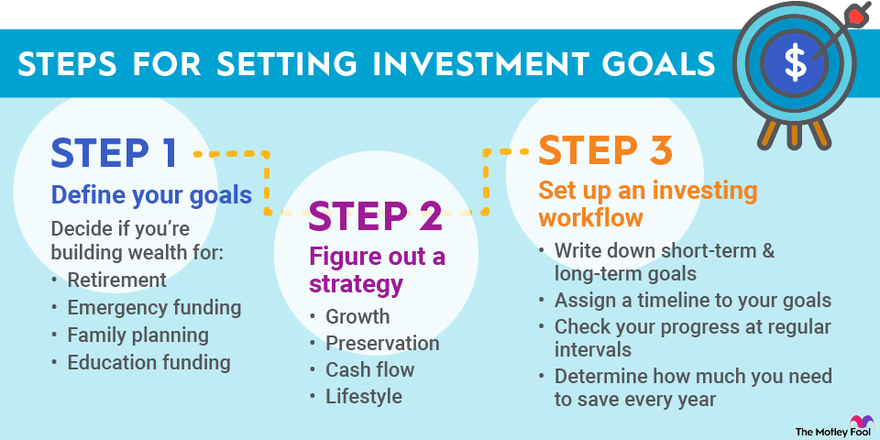Long-term forex investing strategies for retirement require a balanced approach that combines forex trading with traditional investments like stocks, bonds, and mutual funds. This diversified portfolio helps mitigate risks and provides stable returns, ensuring a secure retirement.
Consulting a financial advisor is recommended to determine the optimal asset allocation for retirement goals. Investing for retirement is a crucial step in ensuring financial security in the long run. While there are various investment options available, long-term forex investing strategies can be a lucrative option.
By combining forex trading with traditional investments like stocks, bonds, and mutual funds, individuals can create a diversified portfolio that helps in mitigating risks and provides stable returns. This article discusses the importance of long-term forex investing strategies for retirement, the benefits of diversification, and the role of a financial advisor in creating an optimal asset allocation. Let’s explore these strategies further to achieve a secure and prosperous retirement.

Credit: barbarafriedbergpersonalfinance.com
Common Long-term Investment Options For Retirement
Consider long-term forex investing strategies for retirement, such as diversifying your portfolio with forex trading, stocks, bonds, and mutual funds. This balanced approach can help mitigate risks and provide stable returns, aligning with your retirement objectives. Consulting a financial advisor can also help determine the optimal asset allocation for your retirement goals.
Income Annuities
The first choice for long-term retirement investments is income annuities.
Diversified Bond Portfolio
Another reliable option is a diversified bond portfolio.
Total Return Investment Approach
Consider utilizing the total return investment approach.
Income-producing Equities
Lastly, explore income-producing equities for potential growth.

Credit: www.tgccpa.com
Best Practices For Long-term Investing
When it comes to preparing for retirement, it’s essential to have a solid long-term investing strategy in place. By following best practices, you can maximize your returns and ensure a financially secure future. In this article, we will explore the key aspects of long-term investing and discuss the best practices to help you achieve your retirement goals.
Matching Investments To Goals
One of the first steps in creating a successful long-term investing strategy is matching your investments to your goals. By clearly defining what you want to achieve in retirement, you can select the right investment options that align with your objectives. Whether you prioritize growth, income, or a combination of both, it’s important to understand how each investment vehicle can help you reach your specific goals.
Diversification Strategies
In order to minimize risk and maximize returns, diversification is key. Spreading your investments across different asset classes, such as stocks, bonds, and mutual funds, can help protect your portfolio from volatility. By diversifying, you can ensure that a decline in one investment does not have a significant impact on your overall retirement savings.
To illustrate the benefits of diversification, consider the following table:
| Asset Class | Allocation |
|---|---|
| Stocks | 60% |
| Bonds | 30% |
| Mutual Funds | 10% |
By diversifying your investments across these asset classes, you can reduce the impact of any single asset class underperforming.
Avoiding Market Timing
Attempting to time the market is a risky strategy that can negatively affect your long-term investment returns. Instead of trying to predict short-term market movements, it’s best to adopt a buy-and-hold approach. By maintaining a long-term perspective, you can ride out market fluctuations and benefit from the overall growth of the market.
Setting And Following A Purchase Plan
Consistency is key when it comes to long-term investing. By setting up a purchase plan and sticking to it, you can take advantage of dollar-cost averaging. This strategy involves investing a fixed amount of money at regular intervals, regardless of market conditions. Over time, this approach can help smooth out the impact of market volatility and potentially lower your average purchase price.
Monitoring Progress
To ensure that your long-term investing strategy is on track, it’s important to regularly monitor your progress. This involves reviewing your portfolio, assessing your investment performance, and making any necessary adjustments. By staying informed and proactive, you can make better decisions to optimize your retirement savings.
By following these best practices, you can create a solid foundation for your long-term forex investing strategy for retirement. Remember to seek guidance from a financial advisor to ensure your investment approach aligns with your specific goals and risk tolerance.
Combining Forex Trading With Traditional Investments
When it comes to securing your retirement, a combination of forex trading with traditional investments offers a unique avenue to diversify your portfolio. This balanced approach can help mitigate risks and provide stable returns, aligning with your long-term financial goals.
Diversification Benefits
By diversifying with forex trading along with traditional investments such as stocks, bonds, and mutual funds, you can spread your risks across different asset classes and geographic regions. Diversifying your portfolio can help shield your retirement savings from market volatility and economic uncertainties.
Consulting A Financial Advisor For Optimal Asset Allocation
Optimal asset allocation is crucial for long-term success in retirement investing. Consulting a financial advisor can provide personalized guidance to tailor your investment mix according to your risk tolerance, time horizon, and retirement objectives. A professional assessment can help optimize your portfolio for long-term growth and sustainability.
“` This content combines the benefits of combining forex trading with traditional investments for retirement, highlighting the diversification benefits and the importance of consulting a financial advisor for optimal asset allocation. Each H3 heading adheres to HTML syntax and the content is SEO-optimized and informative.:max_bytes(150000):strip_icc()/retirement-planning.asp-FINAL-ed21279a08874c54a3a0f4858866e0b6.png)
Credit: www.investopedia.com
Strategies For Long-term Investment Success
Guidelines For Long-term Investment Planning
When planning long-term investments, it is crucial to follow these guidelines:
- Match investments with goals
- Diversify across various assets
- Avoid market timing
- Stick to a consistent purchase plan
- Regularly monitor and review progress
Alignment Of Investments With Objectives
Ensure that your investment choices are in line with your financial objectives:
- Define clear retirement goals
- Choose investments that align with risk tolerance
- Consider long-term growth potential
- Rebalance portfolio periodically
- Seek professional advice when needed
Index Funds And Etfs For Long-term Retirement Investing
When it comes to long-term retirement investing, index funds and exchange-traded funds (ETFs) are two popular options to consider. These investment vehicles offer several benefits that make them attractive choices for investors looking for a stable and diversified portfolio. In this section, we will discuss the benefits of investing in index funds and the advantages of ETFs for long-term retirement planning.
Investing In Index Funds
Index funds are a type of mutual fund that aims to replicate the performance of a specific stock market index, such as the S&P 500. By investing in index funds, you can gain exposure to a wide range of stocks and diversify your portfolio without the need for extensive research or stock-picking skills.
The benefits of investing in index funds include:
- Low costs: Index funds typically have lower expense ratios compared to actively-managed funds, which means you keep more of your investment returns.
- Diversification: Since index funds are designed to track a specific index, they typically hold a large number of stocks from various industries. This diversification helps reduce portfolio risk.
- Consistent returns: Over the long-term, index funds have historically performed well, often outperforming actively-managed funds.
- Predictable performance: Index funds aim to match the performance of a specific index, which means you know what you’re getting. There are no surprises or sudden changes in strategy.
- Tax efficiency: Due to their passive management style and low portfolio turnover, index funds are generally more tax-efficient compared to actively-managed funds.
Benefits Of Exchange-traded Funds (etfs)
ETFs are another popular investment option for long-term retirement planning. Like index funds, ETFs offer diversification and cost-effective investment opportunities. Here are some benefits of investing in ETFs:
- Liquidity: ETFs trade on stock exchanges, which means they can be bought and sold throughout the trading day at market prices. This provides investors with flexibility and easy access to their investments.
- Transparency: ETFs disclose their holdings daily, allowing investors to see exactly what assets they own within the fund. This transparency helps investors make informed investment decisions.
- Lower expenses: ETFs typically have lower expense ratios compared to mutual funds. This means you can save on fees while still gaining exposure to a diversified portfolio.
- Flexibility: ETFs cover a wide range of asset classes, including stocks, bonds, commodities, and even specific sectors or countries. This flexibility allows investors to build a well-rounded and tailored portfolio.
- Tax efficiency: Similar to index funds, ETFs are generally more tax-efficient compared to actively-managed funds due to their structure and low turnover.
By including index funds and ETFs in your long-term retirement investment strategy, you can benefit from their low costs, diversification, consistent returns, and tax efficiency. Moreover, these investment vehicles provide convenience, flexibility, transparency, and liquidity, making them suitable choices for investors planning for a financially secure retirement.
Overcoming Challenges In Long-term Investment For Retirement
When planning long-term forex investing strategies for retirement, it’s crucial to overcome challenges through diversified portfolios and smart asset allocation. With a balanced approach that combines forex trading with traditional investments, such as stocks and bonds, you can mitigate risks and ensure stable returns.
Seek advice from financial advisors to optimize your retirement goals.
Macroeconomic Uncertainty And Investment
Investing for retirement involves navigating through macroeconomic uncertainties that can impact long-term investment strategies.
Evaluating Short- And Long-term Investment Strategies
When evaluating investment strategies for retirement, it is essential to consider both short-term gains and long-term growth prospects.
One challenge in long-term investing for retirement is the uncertainty in the macroeconomic landscape, including factors like inflation rates and geopolitical events.
It’s crucial to assess short- and long-term investment strategies to ensure a well-rounded retirement portfolio that can withstand market fluctuations.
- Consider diversifying your investments across various asset classes to mitigate risks.
- Regularly review and adjust your portfolio based on your retirement goals and risk tolerance levels.
By staying informed about macroeconomic trends and carefully evaluating investment strategies, you can overcome challenges in long-term investing for retirement.
Frequently Asked Questions On “long-term Forex Investing Strategies For Retirement”
How To Invest For Long Term Retirement?
To invest for long-term retirement, consider these options: income annuities, a diversified bond portfolio, a total return investment approach, and income-producing equities. It’s important to match your investments to your goals, diversify your portfolio, avoid timing the market, set up a purchase plan, and monitor your progress.
Consult a financial advisor for guidance and consider diversifying your retirement portfolio with forex trading and traditional investments.
What Is The Best Investment Mix For Retirees?
For retirees, a balanced mix includes income annuities, diversified bonds, total return investments, and income-producing equities. Diversify to manage risk and consult a financial advisor for optimal asset allocation.
Which Strategy Is Best For Long Term Investment?
Diversify bonds, equities, annuities, and total return for a long-term investment. Avoid market timing, track goals, and be consistent in purchases.
What Is The Best Investment Portfolio For A 60 Year Old?
For a 60-year-old, the best investment portfolio typically includes a mix of income-producing assets like annuities, bonds, and equities. It’s advisable to consult a financial advisor and aim for a balanced approach to mitigate risks and provide stable returns. Diversification is key for long-term retirement planning.
Conclusion
When it comes to long-term forex investing strategies for retirement, it’s important to keep in mind that success lies in aligning your investments with your goals. Spread your investments across multiple baskets and avoid trying to time the market. Stick to a purchase plan and monitor your progress regularly.
Consider diversifying your retirement portfolio by incorporating forex trading with traditional investments. Consulting a financial advisor can help determine the optimal asset allocation for your retirement goals. With a systematic and balanced approach, you can mitigate risks and achieve stable returns.
